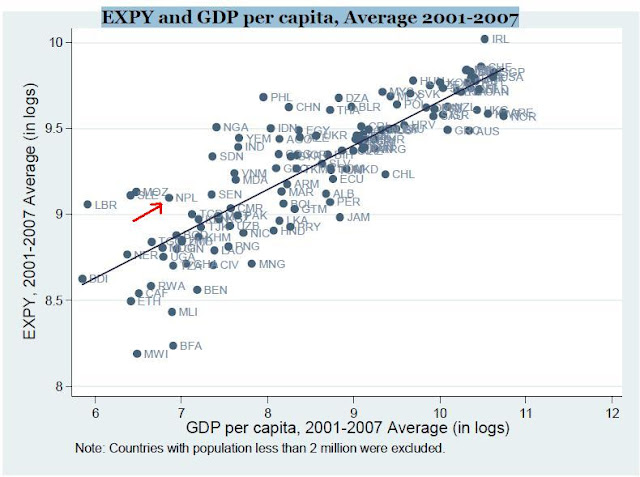Income of Nepal
 The US Central Intelligence Agency (CIA) reports that in 2001 Nepal's gross domestic product (GDP) was estimated at $35.6 billion. The per capita GDP was estimated at $1,400. The annual growth rate of GDP was estimated at 2.6%. The average inflation rate was 2.1%. The CIA defines GDP as the value of all final goods and services produced within a nation in a given year and computed on the basis of purchasing power parity (PPP) rather than value as measured on the basis of the rate of exchange. It was estimated that agriculture accounted for 41% of GDP, industry 22%, and services 37%.
The US Central Intelligence Agency (CIA) reports that in 2001 Nepal's gross domestic product (GDP) was estimated at $35.6 billion. The per capita GDP was estimated at $1,400. The annual growth rate of GDP was estimated at 2.6%. The average inflation rate was 2.1%. The CIA defines GDP as the value of all final goods and services produced within a nation in a given year and computed on the basis of purchasing power parity (PPP) rather than value as measured on the basis of the rate of exchange. It was estimated that agriculture accounted for 41% of GDP, industry 22%, and services 37%. According to the United Nations, in 2000 remittances from citizens working abroad totaled $300 million or about $5 per capita and accounted for approximately 2.1% of GDP. Worker remittances in 2001 totaled $409 million. Foreign aid receipts amounted to about $16 per capita and accounted for approximately 7% of the gross national income (GNI).
Approximately 44% of household consumption was spent on food, 7% on fuel, 5% on health care, and 14% on education. Household consumption includes expenditures of individuals, households, and nongovernmental organizations on goods and services, excluding purchases of dwellings. The richest 10% of the population accounted for approximately 29.8% of household consumption and the poorest 10% approximately 3.2%. It was estimated that in 1996 about 42% of the population had incomes below the poverty line.













Post a Comment